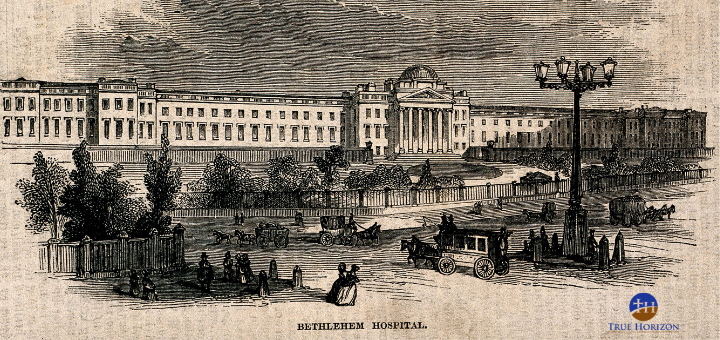A Myth Come True
If you’re anything like me, you probably associate the word “myth” with an ancient fairy tale. The Greek and Roman pantheon of gods comes to mind — magical spells, curses, and multi-headed monsters. But myths are more than just old-fashioned fantasies. They serve a purpose. They appeal to our collective imaginations. Myths may be fantastical but, as the Merriam-Webster Dictionary puts it, they “serve to unfold part of the worldview of a people or explain a practice, belief, or natural phenomenon.” They are archetypal stories that help us make sense of the world in which we find ourselves. In other words, there is a connection between myth and reality.
The Power of a Story
C. S. Lewis grew up a voracious reader. In 1916, while waiting for a train near London, he bought a copy of George MacDonald’s Phantastes: A Faerie Romance. The book changed his life, not because it enticed him to believe in fantasies, but because it “baptized his imagination” through the power of story. His appreciation for man’s moral imagination led to a lifetime of reading and writing stories. He later studied ancient Greek and Latin literature, philosophy, and Medieval and Renaissance literature. He taught and lectured on all of those during his 29 years as a professor at Magdalen College, University of Oxford.
Great Minds Don’t Always Think Alike
While he was at Oxford, Lewis became friends with J. R. R. Tolkien. They argued about philosophy, religion, and the existence of God. Both were storytellers. And they argued about how to tell stories too. Tolkien, the author of The Hobbit and Lord of the Rings, believed that myths originated in the mind of God as a way to communicate his truths to the world. Lewis thought that was nonsense. Though he saw myths as beautiful charmers of our imaginations, he thought “they were lies: inventions that contain no objective truth about the world.”*
C. S. Lewis struggled with the relationship between myth, imagination, and reality for years. But it wouldn’t let him go. Finally, in 1929, alone in the quiet of his room at Magdalen College, he succumbed to God’s call. And I do mean succumbed.
The Most Reluctant Convert
Lewis describes his two-step conversion — from atheist to theist to Christian — in his autobiography, Surprised by Joy. He knew mythology. And he was intellectually honest enough to read the Christian Scriptures. Something about them rang true. Ultimately, it was his love for truth and stories that merged in the pages of the Gospels:
“I was … too experienced in literary criticism to regard the Gospels as myths. They had not the mythical taste. And yet the very matter which they set down in their artless, historical fashion . . . was precisely the matter of the great myths. If ever a myth had become fact, had been incarnated, it would be just like this. And nothing else in all literature was just like this …
Myths were like it in one way. Histories were like it in another. But nothing was simply like it … And no person was like the Person it depicted; as real, as recognizable, through all that depth of time, as Plato’s Socrates . . . yet also numinous, lit by a light from beyond the world, a god … But if a god — we are no longer polytheists — then not a god, but God. Here and here only in all time, the myth must have become fact; the Word, flesh; God, Man. This is not ‘a religion,’ nor ‘a philosophy.’ It is the summing up and actuality of them all.”**
The God who became flesh made sense of the two things C. S. Lewis knew and loved the most. He surrendered to the divine call. Lewis entered God’s kingdom kicking and screaming, “the most reluctant convert in all of England.”
Storytellers
C. S. Lewis’s conversion is notorious but it’s not unique. History is littered with the accounts of reluctant converts who were struck by the peculiar force of the Christian myth. He and Tolkien became two of the most famous storytellers to do so.
“Fortified by their faith, they proclaimed for their generation — and ours — a True Myth about the dignity of human life and its relationship to God. Against all expectation, their writings would captivate and inspire countless readers from every culture and every part of the globe … as mythmakers, [their writing] created new worlds … invented new languages, and transported us into realms of brooding darkness and unforgettable beauty.”***
In the end, Tolkien and Lewis rejected the secular myth that had dragged the world through two World Wars and into the empty despair of the postmodern worldview. They were masterful at appealing to our moral imaginations. They connected myth to reality.
The True Myth
The Christian myth is a story of the struggle between good and evil. It’s a story of flawed and rebellious people, heroes, and villains. Ultimately, it’s the most fantastic story of redemption ever told. And its hero is — as my friend Tom Gilson has put it in his book by the same name — simply “too good to be false.” Gilson’s point is that Jesus of Nazareth is the most compelling character in human history for a reason. He stepped into the story he wrote.
Jesus’ life and ministry are recorded and verifiable. The veracity of the accounts of his death and resurrection are as reliable as those of any historical event. But his impact goes beyond the reliable accounts about it. As J. Warner Wallace has so clearly summarized it in his book, Person of Interest, Jesus’ life rocked the world, even for those who never believed in him. He influenced education, literature, music, art, architecture, and science in ways that no mere mortal ever could. We restarted our calendars because of his life. He quite literally changed the world by combining history’s most fascinating character with mythology’s most compelling storyline.
He brought the myth to life.
Heaven Meets Earth
In Jesus, the infinite voluntarily reduced itself to something we could see and understand. The divine put on flesh and bone. The all-powerful became a pain-feeling person who stood for the powerless. The Almighty who spoke the universe into existence took the form of a tiny, vulnerable embryo. The Great Mythical ‘I AM’ became a little boy.
Contemplating that, I was reminded of a talented musician named Rich Mullins. Mullins died tragically in a car wreck in 1997, at age 41. But his music always resonated with me. It was thought-provoking, vulnerable, and real. Rich Mullins was a storyteller. So, it’s not surprising that the same guy who wrote the classic worship song, “Awesome God,” also wrote the little tune I offer you below.
Here, Mullins does with music what C. S. Lewis did with literature. He brings the myth to life. It will never become a classic in the genre, but that’s why I consider Rich Mullins’ “Boy Like Me” to be a Christmas song. Maybe you will too …
Boy Like Me
You was a baby like I was once … You was cryin’ in the early morn’
You was born in a stable, Lord … Reid Memorial is where I was born.
They wrapped You in swaddling clothes … Me they dressed in baby blue.
Well, I was twelve years old in the meeting house, listening to the old men pray,
And I was tryin’ hard to figure out what it was that they was tryin’ to say.
There You were in the temple … They said You weren’t old enough to know the things You knew
Well, did You grow up hungry? Did You grow up fast?
Did the little girls giggle when You walked past?
Did You wonder what it was that made them laugh?
And did they tell You stories ’bout the saints of old? Stories about their faith?
They say stories like that make a boy grow bold. Stories like that make a man walk straight.
And You was a boy like I was once … But was You a boy like me?
Well, I grew up around Indiana. You grew up around Galilee
And if I ever really do grow up … Lord, I want to grow up and be just like You.
____________
* Joseph Loconte, A Hobbit, A Wardrobe and a Great War (Nashville: Nelson Books, 2015), pp. 130-131.
** C. S. Lewis, Surprised by Joy (New York: Harcourt Brace Jovanovich, 1956), pp. 236.
*** Loconte, p. 138.



Thanks Bob. I not all to familiar with Rich Mullins music. Love the song. I’ll have to check out some of his other songs. Another great read as well. I look forward to each and every one of your posts.
Dude was a genius. I’m betting you’ve heard his songs and just didn’t know who he was. Like this one …
https://www.youtube.com/watch?v=2w2b033DXCw
I have friends who went to college with him and said he was an amazing person as well as an amazing artist.
As always, thanks for reading. My best to you and your family…
Merry Christmas!
I probably have heard some of his songs and didn’t realize it was him. Here is an article you might like, it certainly dovetails with your post. Best to you and your family as well. Merry Christmas.https://www.theblaze.com/op-ed/deace-at-christmas-god-shows-a-rebellious-world-just-how-radical-he-can-be
Yeah, good stuff.